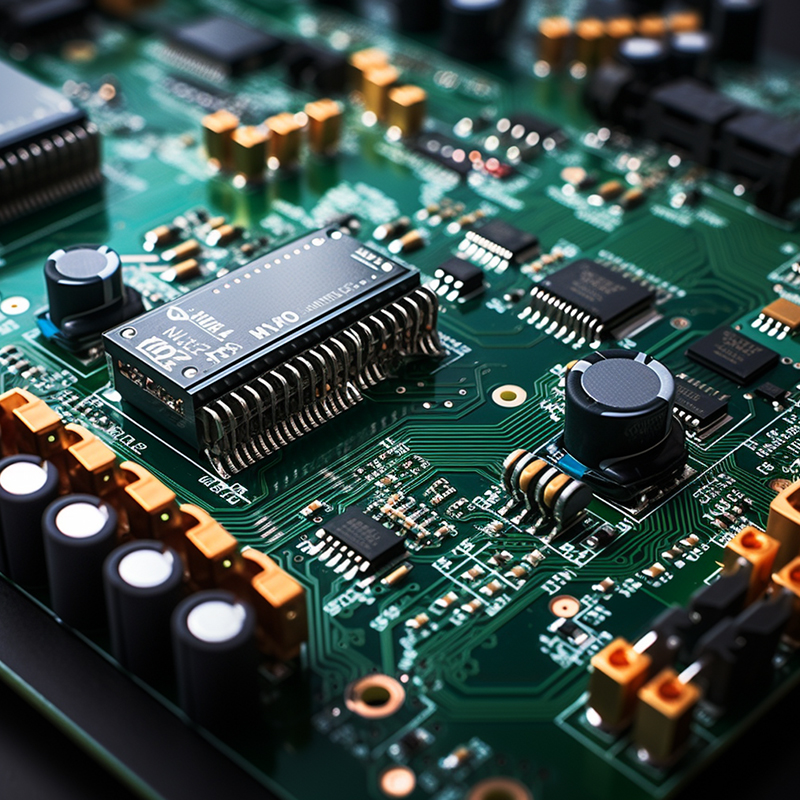Introduce
Integrated circuits (ICs) and printed circuit boards (PCBs) are important components in modern electronics. ICs have revolutionized the way electronic devices are designed and manufactured by integrating multiple electronic components into a single chip. At the same time, narrow-width PCBs play a key role in enabling compact and efficient electronic device designs. This article will explore the importance of integrating ICs with narrow PCBs, the challenges and benefits associated with such integration, and best practices for designing ICs on narrow PCBs.
What is an integrated circuit?
Integrated circuits, often called microchips or ICs, are tiny electronic circuits made by integrating various electronic components such as resistors, capacitors, and transistors onto a single semiconductor wafer. These components are interconnected to perform specific functions, making ICs the building blocks of electronic devices. ICs are used in a wide range of applications, including smartphones, computers, medical devices, and automotive systems.
The benefits of using integrated circuits are huge. Because ICs are compact in size, smaller and lighter electronic devices can be developed. They consume less power and generate less heat than traditional discrete electronic components. In addition, ICs offer increased reliability and performance, making them an integral part of modern electronic system designs.
What is a narrow width printed circuit board?
A narrow-width printed circuit board (PCB) is a PCB that has a smaller width than a standard PCB. PCB is an important part of electronic equipment, providing a platform for mounting and interconnecting electronic components. Narrow-width PCBs are critical for achieving compact and slim designs in electronic devices, especially in space-constrained applications.
The importance of narrow design in electronic devices cannot be overstated. As technology continues to develop, electronic devices are becoming more compact and portable. Narrow-width PCBs are critical to miniaturizing electronic devices, resulting in smaller, more ergonomic designs. They also help improve signal integrity and reduce electromagnetic interference in dense electronic components.
An example of a device using narrow printed circuit boards is the latest generation of smartphones. The demand for stylish, lightweight smartphones has driven the development of narrow-width PCBs that can accommodate the complex circuitry required for modern smartphone features such as high-resolution cameras, 5G connectivity and advanced sensors.
Integration of integrated circuits and narrow width PCBs
The integration of integrated circuits into narrow-width PCBs offers several advantages in electronic device design. By combining ICs with narrow PCBs, designers can create highly integrated and space-saving electronic systems. This integration reduces manufacturing costs, improves reliability and enhances performance of electronic devices.
However, designing integrated circuits on narrow PCBs presents several challenges and considerations. Designers need to address issues related to signal integrity, thermal management, and manufacturing tolerances when developing ICs for narrow PCBs. Despite these challenges, the benefits of integrating ICs with narrow PCBs far outweigh the complexity, especially in applications where space is at a premium.
Examples of applications where IC integration with narrow PCBs is critical include wearable devices, medical implants, and aerospace systems. In these applications, size and weight constraints drive the need for highly compact electronic designs, making the integration of ICs into narrow-width PCBs indispensable.
How to Design an Integrated Circuit Narrow Width PCB
Designing integrated circuits for narrow width PCBs requires a thorough understanding of best practices and optimization techniques. When developing ICs for narrow PCBs, factors such as routing density, thermal management, and signal integrity must be considered. Leveraging advanced design tools and simulation techniques can help optimize the integration process and ensure the reliability and performance of integrated electronic systems.
Case studies of successful IC designs on narrow-width PCBs highlight the importance of collaboration between IC designers, PCB designers, and manufacturers. By working closely together, these teams can identify and resolve potential design challenges early in the development process, resulting in successful integration and high-quality electronic systems.
In conclusion
In summary, the integration of integrated circuits with narrow-width printed circuit boards plays a vital role in the design of future electronic devices. As consumer demand for smaller, more efficient electronic devices continues to grow, the need for highly integrated and space-saving electronic systems has become increasingly prominent. By adopting best practices and optimization techniques for narrow-width PCB IC design, electronic designers can stay ahead of the curve and provide innovative solutions to meet the changing needs of the market.
The future of integrated circuit design lies in the seamless integration of ICs into narrow PCBs, enabling the development of next-generation electronic devices that are compact, energy-efficient, and high-performance. For expert help with narrow PCB design and integration of integrated circuits, contact our team of experienced professionals. We are committed to helping you achieve the best in electronics design through cutting-edge technology and partnerships.
In summary, the integration of integrated circuits with narrow-width printed circuit boards is critical to the future of electronic device design. By adopting best practices and optimization techniques in IC design for narrow-width PCBs, electronic designers can create innovative solutions to meet the changing needs of the market. If you need expert help with the design and integration of narrow PCBs for integrated circuits, contact our team for professional guidance. We are committed to helping you achieve the best in electronics design through cutting-edge technology and partnerships.
Post time: Jan-05-2024
Back







